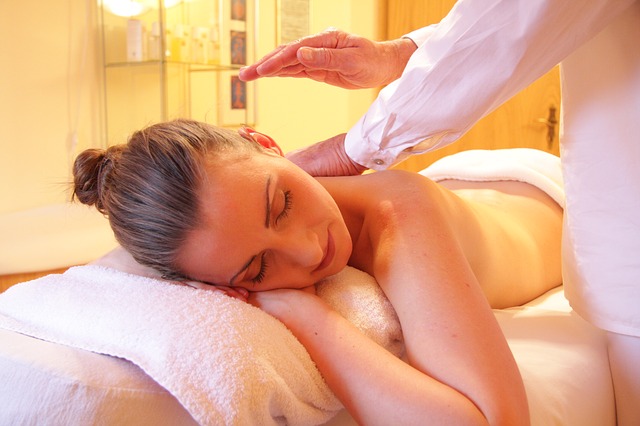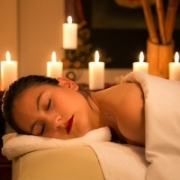Understanding the Ever-Growing Massage-Spa Divide
This fall, the spa and wellness industry received some eagerly-awaited performance data at two industry conferences; the International Spa Association (ISPA) Conference in Phoenix, followed by the Global Wellness Summit (GWS) in Cesena, Italy.
As it does every year, ISPA shared an update to the “Big Five” numbers, as researched by PriceWaterhouseCoopers (PwC), and they were all positive; spa visits, revenues and numbers of spas were all up. At the GWS, Global Wellness Institute (GWI) researchers Ophelia Yeung and Katherine Johnston released updates to the Global Wellness Economy data last reported in 2015, also positive. The wellness economy is now estimated to be worth 4.2 trillion, with the spa piece valued at $94 billion. We should be very excited about these numbers, as they show our industry is continuing to grow, and has even more potential as spa businesses continue to augment with wellness elements. I know I’m encouraged, but there is a dark side.
At the ISPA conference, PwC’s Colin McIlheney also highlighted some of the findings from the inaugural Workforce Study, and they clearly show there are challenges ahead on the labor front. Spas reporting service provider vacancies numbered 67 percent, and almost 36,000 positions, both full and part-time, are unfilled. Of those, nearly 57 percent were massage positions

.
Wait—isn’t massage the number one selling service in 90 percent of spas, globally? This doesn’t make sense.
Much of my consulting work is in optimizing the business results of existing spas, and I can definitively say that currently, I don’t have any consulting clients who have enough massage therapists. In fact, I have three active clients, in three separate corners of the U.S., who have been consistently searching for additional massage therapists for as long as the past year, to no avail.
It’s not that there aren’t any massage therapists, in fact the industry is far from it. The American Massage Therapy Association (AMTA) estimates that there are between 335,000 and 338,000 massage therapists and students, most in the U.S. It’s more that the success of spas and consumer awareness of the need to seek services that provide stress release has resulted in wide-ranging opportunities for massage therapists. When I started working in the spa industry in the mid-1980s, massages had to be included in packages I order to get clients to try them! That is hardly the case today.
Today, massage therapists have many income-earning opportunities; massage franchises, app-driven service delivery models such as Zeel and Soothe, in-house therapists in tech and healthcare companies, and of course as independent contractors working for themselves. Perhaps working in a spa is just not as appealing? Because of the physical demands of massage, therapists have long supplemented their four to six-hour spa shifts with client home visits and side jobs, but now the model is shifting, and many therapists are more focused on those other options and will commit to only a shift or two per week in a spa setting.
Is compensation the answer? I don’t believe so.
My consulting client spas all provide competitive pay along with, at minimum, PTO accumulation, and some even offer health care benefit contributions and bonus opportunities. Yet, for one of my clients, the massage therapists are only willing to work if they can dictate their own schedules and remain independent contractors. However, that particular combination of low margin and lack of quality control and consistency is not a solution for spas attempting to offer top-quality treatments, while scaling their brand presence.
As it is, filling a seven-day-per-week schedule for four massage treatment rooms would require as many as 10-12 therapists, given the fact that most therapists cannot perform massages for more than 25 hours per week. So, hiring even more bodies, in an environment with dwindling interest, does not seem like a solution.
Contributing factors may be that people today have a different concept of work and careers; they often seem to prefer having multiple part-time jobs to one main source of income. Also, many spa businesses have neglected to create a strong career path or have been unable to provide a comprehensive compensation plan, with benefits and advancement opportunities, which might keep staff engaged and employed. But whatever the reasons, the trend cannot be denied.
Perhaps it is time for spas to seriously consider other modalities, treatments and activities that will continue to attract guests and allow operators to at least maintain revenue while staying true to the original spa brand vision.
Wellness modalities including acupuncture, chiropractic, wellness coaching, nutritional counseling, and sleep-related treatments are all rising in demand. Movement and group therapies like Pilates, yoga, tai chi, and guided meditation can be offered in flexible lounge space. According to NPD Group, skincare sales in the U.S. are growing again, up 9 percent in 2017 over 2016, reaching $5.6 billion in sales. Given that skincare typically delivers a higher average ticket and retail ratio than massage, maybe it’s time to put more energy into growing this segment of the business.
Our situation is not as much of an issue in other countries, where beauty therapists are licensed to perform all of the services on the menu, and whose daily schedule will regularly include facials, massages, and even nail treatments. I’ve long believed that our U.S. approach of specialization creates higher utilization rates, but that only holds true if you can fill your schedule with providers. Unfortunately, given the state-by-state beauty licensing model here in the U.S., multi-licensed and skilled providers are still a rarity.
The numbers don’t lie; as the demand for wellness services continues to grow, U.S. spas are going to need to formulate a plan to provide wellness services in new and unexpected ways, or we risk losing relevance to tomorrow’s consumer.
This article was published first on americanspa.com.



